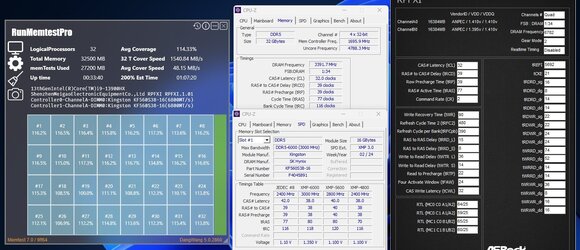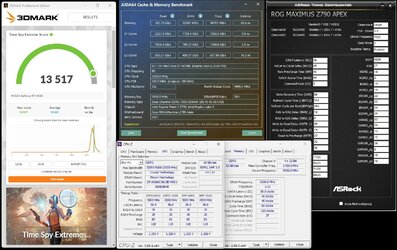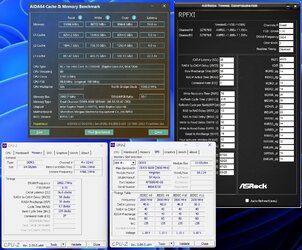Neat that you're able to tweak a SODIMM kit. Any idea which laptops support that?
I have no idea. I picked a Minisforum motherboard for that - AR900i with soldered 13900HX cost me like 14700K in Dec last year. It's about 1/5 of the price that a typical laptop with this CPU costs. It's the only SODIMM motherboard that supports RAM overclocking. I also see that no one reviews SODIMM, so I thought, why not do that?
Minisforum officially says the AR900i motherboard doesn't support overclocking, but somehow it does, up to at least DDR5-7000 (no MC voltage, so I can't even try higher). It also officially supports only DDR5-5600 max and doesn't support XMP, but in reality, it does.
The manufacturer couldn't say anything about RAM compatibility besides it is supposed to work with a regular/JEDEC 2x16GB Kingston kit. Officially, it supports 64GB max, but I tested it with 96GB 5600@6200, and it works fine. With Kingston 6000/XMP kit, it goes up to 6800 stable. Sub-timing options are limited, but the performance is still pretty good. VDD/VDDQ voltages do not always work. It depends on the used PMIC, and even then, it's not guaranteed it will work. So far, voltages work only on Kingston kits with XMP (so there are only 2 kits).
Considering how many SODIMM kits I have already tested, my QVL is much longer than the manufacturer's one

I also have a Minisforum motherboard with a Ryzen 9 7945HX / 16 core/32 thread, but it doesn't support RAM overclocking at all. It works at DDR5-5200 with 5200/5600 kits, and the 6000 XMP kit works only at 4800. It still works at 5200 38-38-38 1.10V with 5600 40-40-40 kit (the one from the last post).
I have the AMD motherboard on my 24/7 PC. It also supports 2xM.2 PCIe 5.0 and has a PCIe x16 5.0 slot. 32 threads with boost up to 5.45GHz and 55W TDP. It's possible to unlock power limits, and then it keeps the max boost for longer and on all cores.
Btw.
Team Xtreem 48GB 8000 review has been added to the list -
the review is on the front page if anyone missed it.
One more Hynix M-die kit that can make 8600+. The main difference is the design; there is no RGB, but there are high-end-looking heatsinks.


